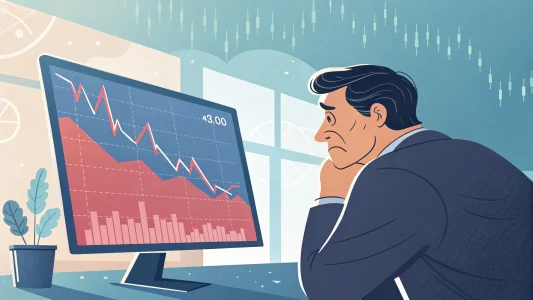Inflation, the rate at which the general level of prices for goods and services is rising, is a critical economic indicator. The Federal Reserve has set a long-term goal of 2% inflation to maintain price stability and maximum sustainable employment. Federal Reserve Chairman Jerome Powell recently expressed increased confidence that inflation is headed back to this 2% target.
This confidence is a positive sign for the economy. It suggests that the Federal Reserve believes the recent surge in inflation is transitory and will eventually subside. This view is supported by the fact that many of the factors contributing to the current inflationary pressures, such as supply chain disruptions and increased demand due to the economy’s reopening, are likely to be temporary.
However, it’s important to note that while the Federal Reserve is confident about returning to the 2% target, it doesn’t mean that inflation will immediately drop to this level. The process could take time, and there might be fluctuations along the way. Therefore, investors and consumers should remain vigilant and monitor the inflation trend closely.
View this post on Instagram
A post shared by Taylor Sohns – CFP®, CIMA®, MBA – Finance (@lifegoalinvestments)
Table of Contents
ToggleLabor market: A return to normal or a sign of weakness?
The labor market is another crucial aspect of the economy that the Federal Reserve closely monitors. Powell acknowledged that the unemployment rate has increased, but he believes it’s just a normalization process. This statement suggests that the Federal Reserve views the recent increase in the unemployment rate as a temporary adjustment rather than a sign of a weakening labor market.
However, Powell also mentioned that the Federal Reserve is watching closely to ensure there isn’t further weakness in the labor market. This statement indicates that while the Federal Reserve is optimistic about the labor market’s overall health, it’s also aware of the potential risks and uncertainties. For instance, the spread of the Delta variant of the coronavirus could potentially slow down the labor market’s recovery.
Interest rates: A potential cut on the horizon?
Interest rates are a critical tool that the Federal Reserve uses to manage the economy. Lowering interest rates can stimulate economic growth by making borrowing cheaper while raising interest rates can slow down the economy by making borrowing more expensive.
In his recent statement, Powell hinted that the base case is to cut interest rates in September. This potential rate cut could be a response to the current economic conditions, such as the rising inflation and the uncertainties in the labor market. By lowering interest rates, the Federal Reserve could stimulate economic activity and support the labor market’s recovery.
However, when asked if a 0.5% interest rate cut was on the table, Powell said it’s not something the Federal Reserve is considering now. This statement suggests that while a rate cut is possible, a significant cut of 0.5% is unlikely at this stage. The Federal Reserve might prefer a more cautious approach, making more minor adjustments to the interest rates based on the evolving economic conditions.
Conclusion: A rosy outlook, but caution is key
Overall, Powell painted a very rosy picture of the economy. He expressed confidence in the economy’s strength and the inflation drifting back downwards. His statements were well-received by the financial markets, with stocks shooting higher in response.
However, it’s important to remember that the economy is complex and unpredictable. While Powell’s statements provide valuable insights into the Federal Reserve’s views and plans, they do not guarantee what will happen. Therefore, investors, businesses, and consumers should continue to monitor the economic indicators and make informed decisions based on their own analysis and judgment.
So, what are your thoughts on Powell’s statements? Do you agree with his views on inflation, the labor market, and interest rates? Your opinions and perspectives are always welcome.
Frequently Asked Questions
Q. What is the Federal Reserve’s long-term goal for inflation?
The Federal Reserve has set a long-term goal of 2% inflation to maintain price stability and maximum sustainable employment.
Q. What does the Federal Reserve’s confidence in returning to the 2% inflation target indicate?
This confidence suggests that the Federal Reserve believes the recent surge in inflation is transitory and will eventually subside. However, it doesn’t mean that inflation will immediately drop to this level. The process could take time, and there might be fluctuations along the way.
Q. How does the Federal Reserve view the recent increase in the unemployment rate?
The Federal Reserve views the recent increase in the unemployment rate as a temporary adjustment rather than a sign of a weakening labor market. However, it is also watching closely to ensure there isn’t further weakness in the labor market.
Q. What could be the reason for a potential cut in interest rates?
The potential rate cut could be a response to the current economic conditions, such as the rising inflation and the uncertainties in the labor market. By lowering interest rates, the Federal Reserve could stimulate economic activity and support the labor market’s recovery.
Q. Is a 0.5% interest rate cut likely?
While a rate cut is possible, a significant cut of 0.5% is unlikely at this stage. The Federal Reserve might prefer a more cautious approach, making smaller adjustments to the interest rates based on the evolving economic conditions.
Q. What is the overall economic outlook according to the Federal Reserve?
The Federal Reserve has a very positive outlook on the economy, expressing confidence in the inflation drifting back downwards and the economy’s strength. However, it’s important to remember that the economy is complex and unpredictable, and the Federal Reserve’s views are not guarantees of what will happen.

















